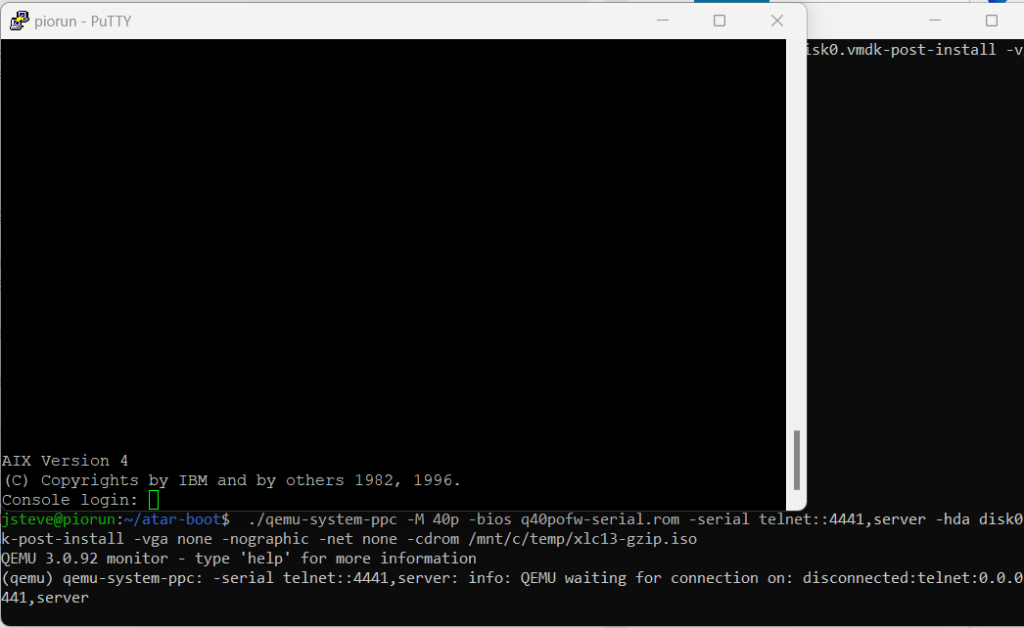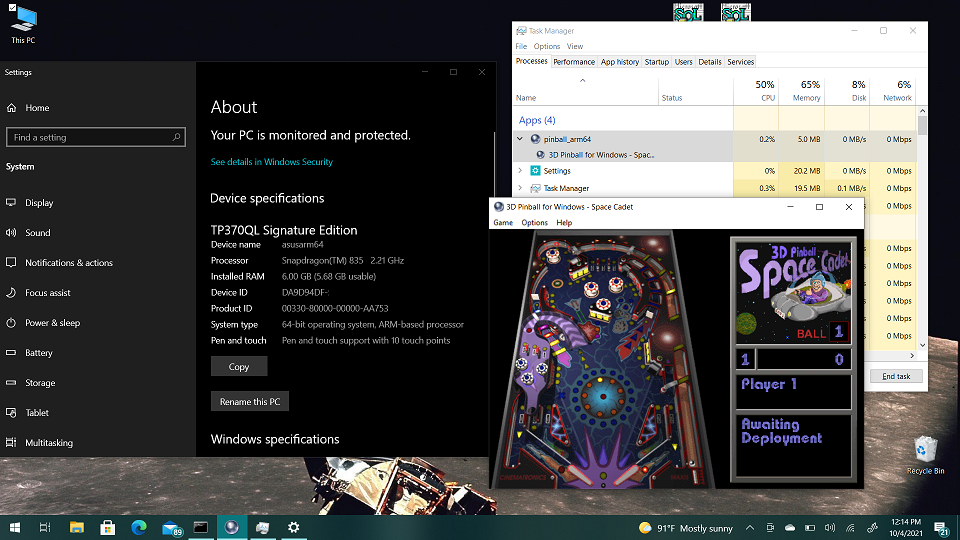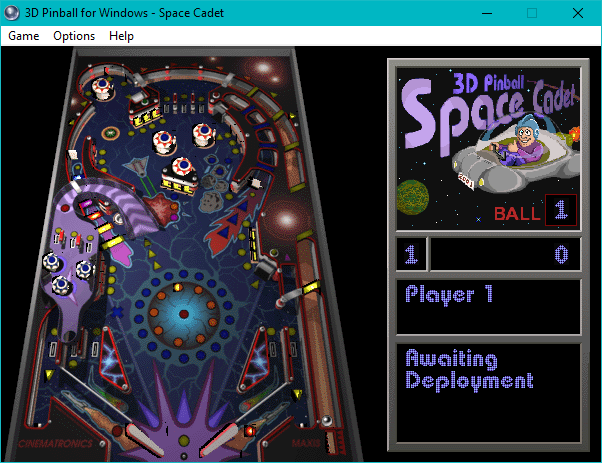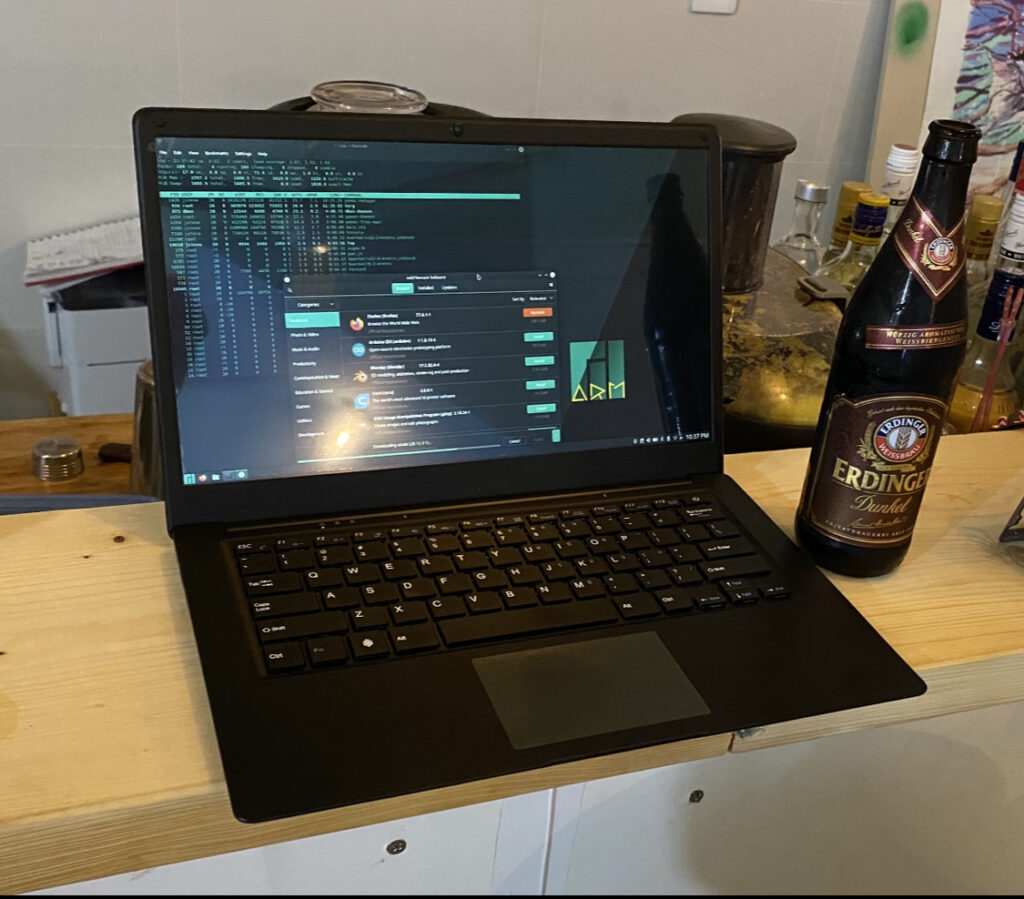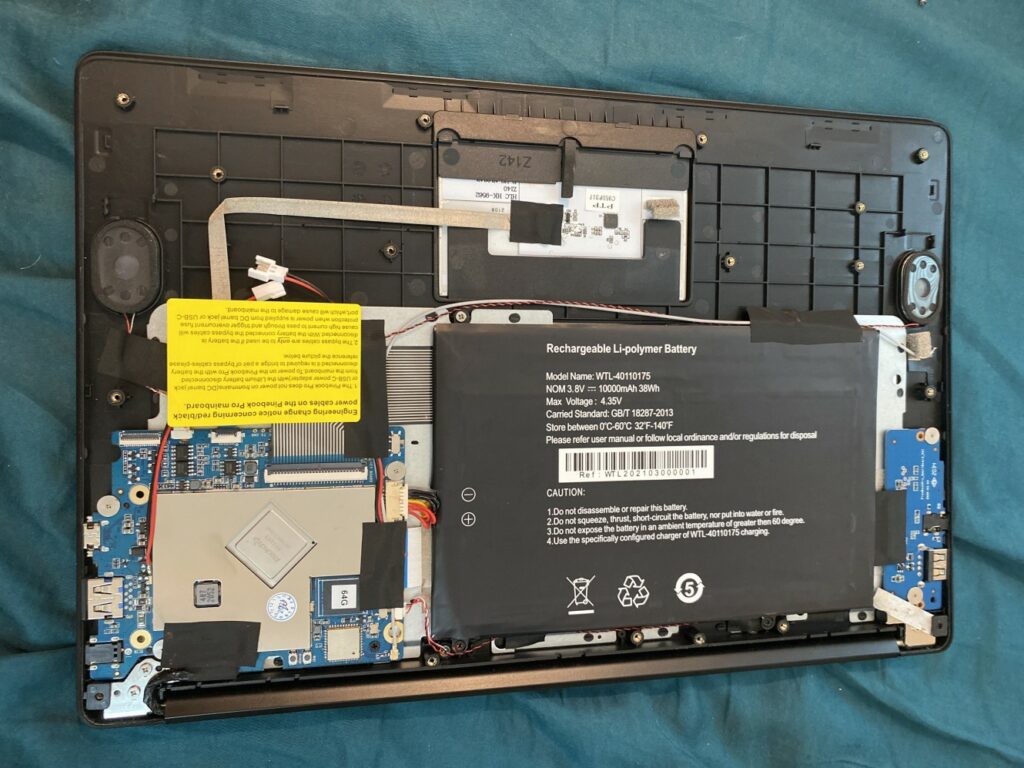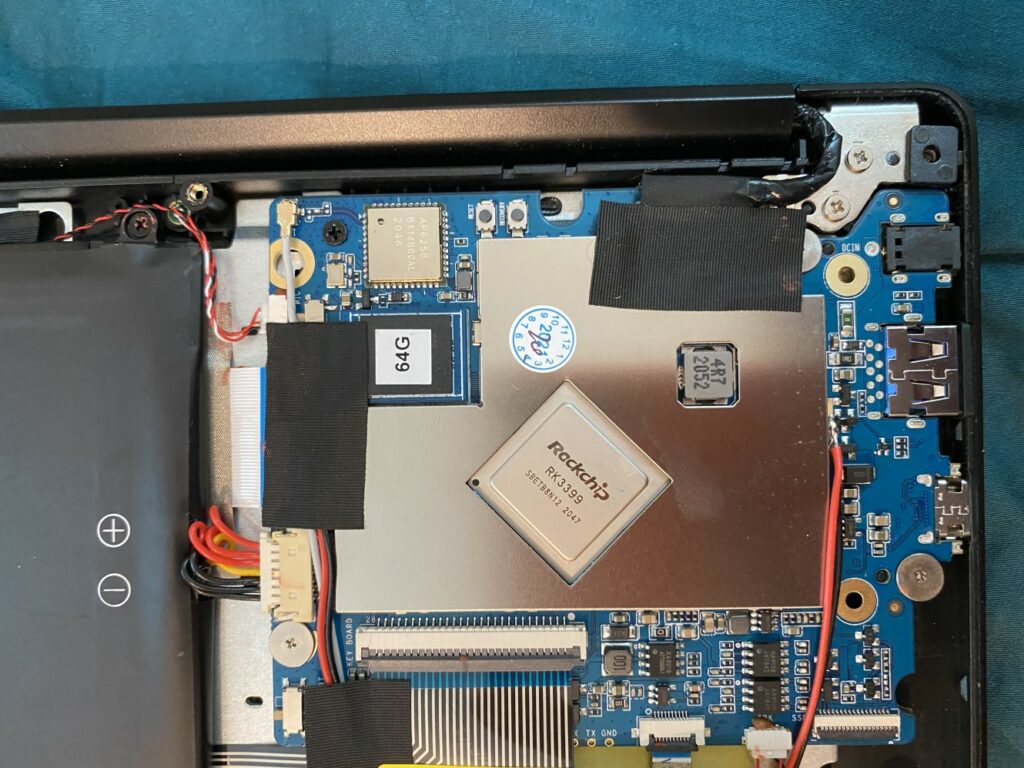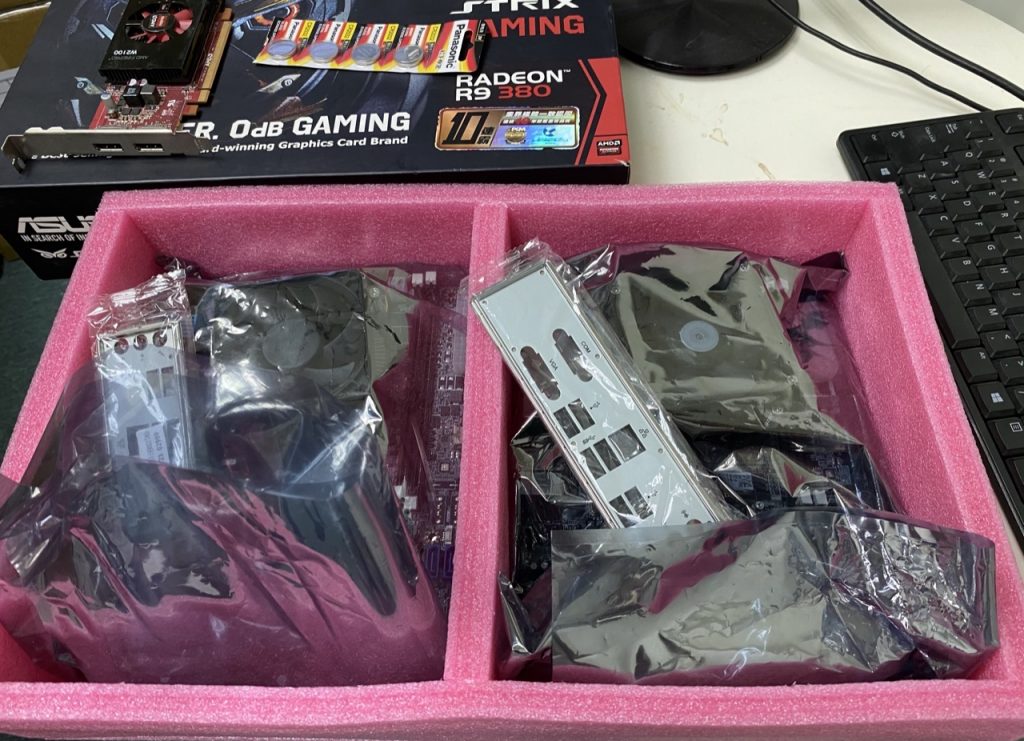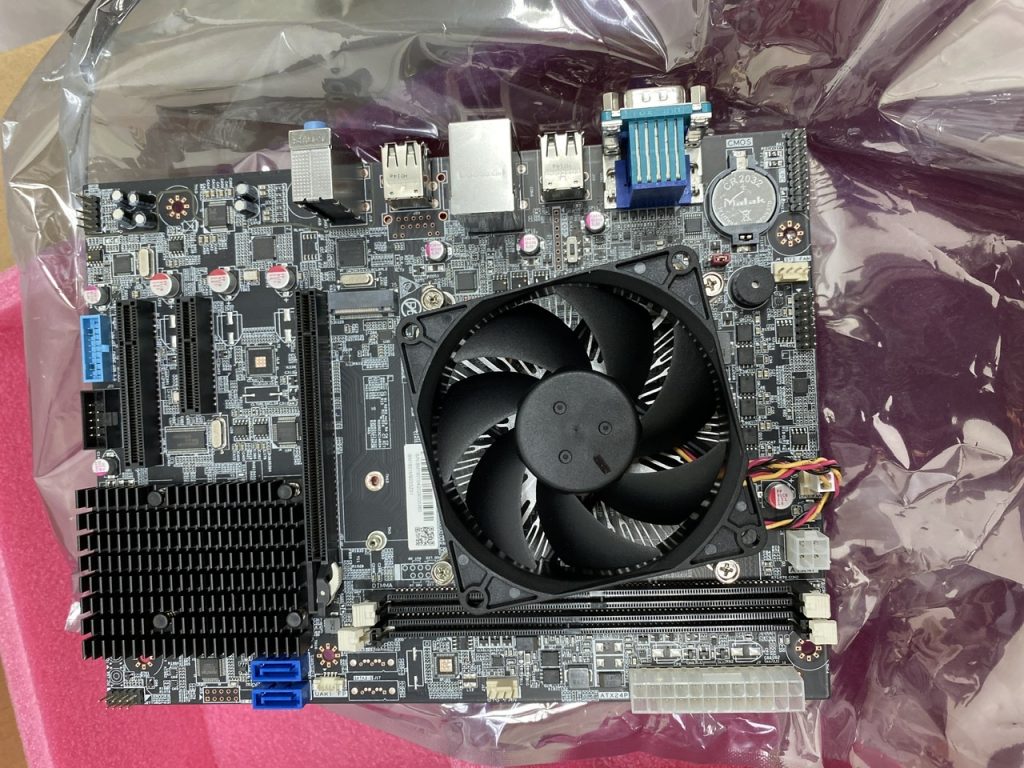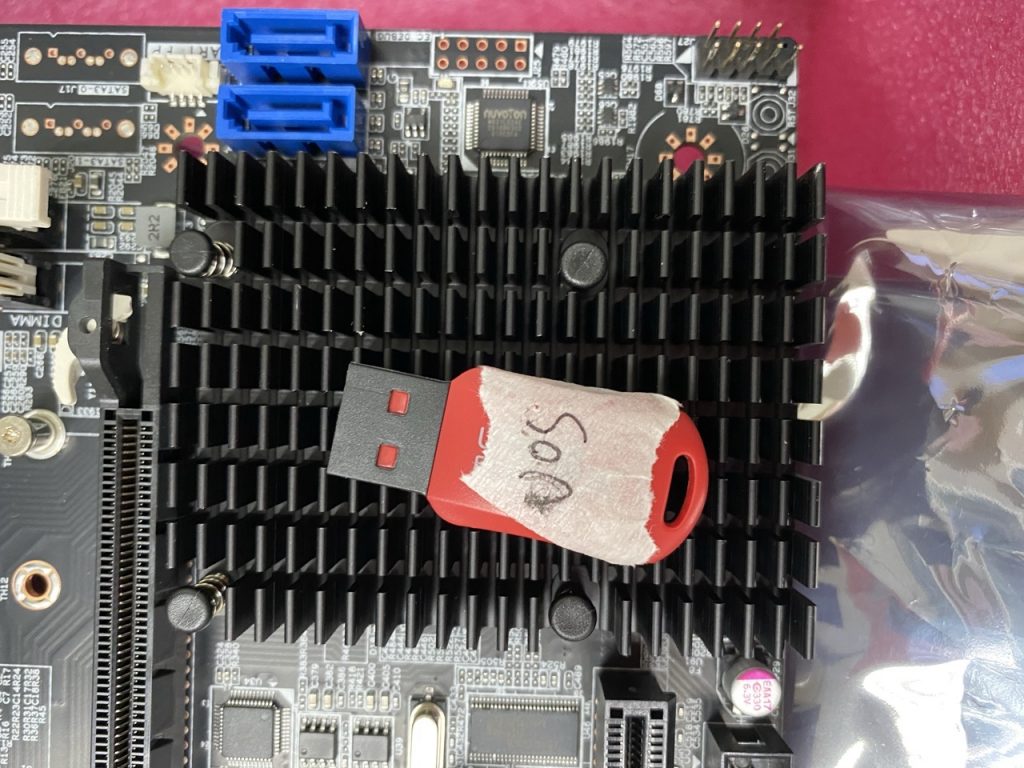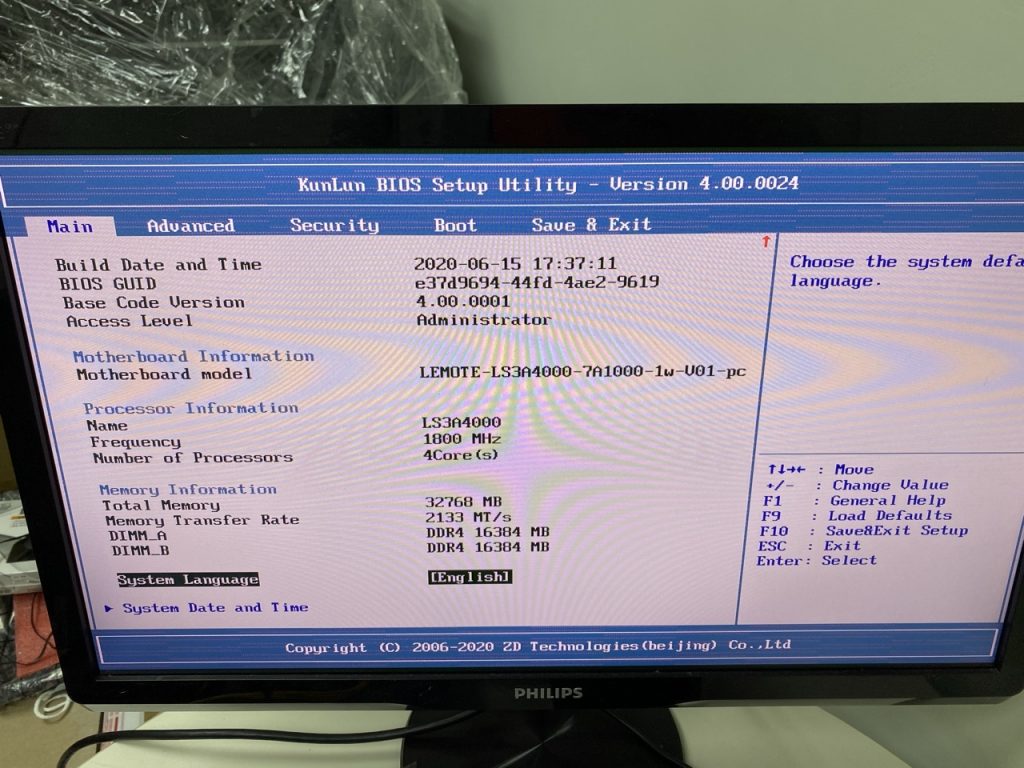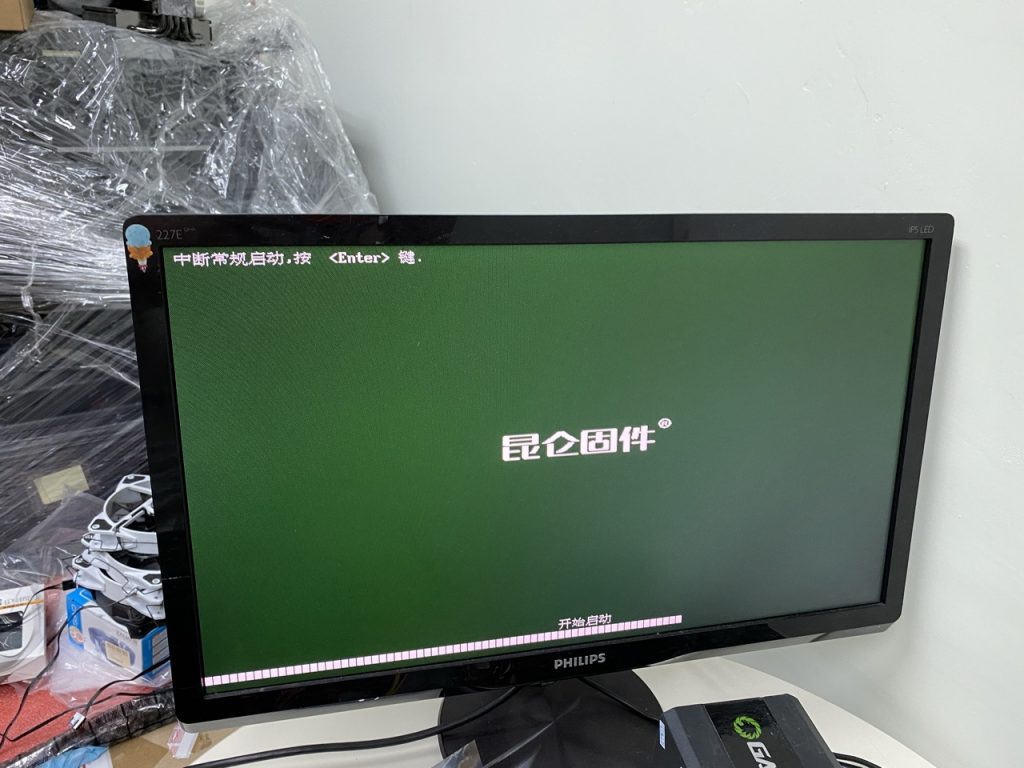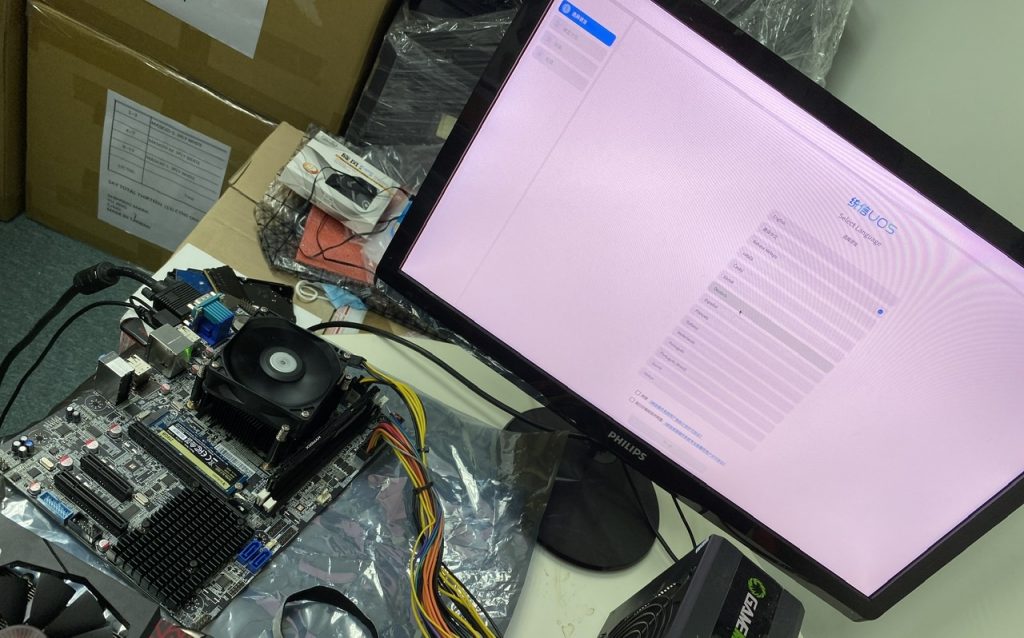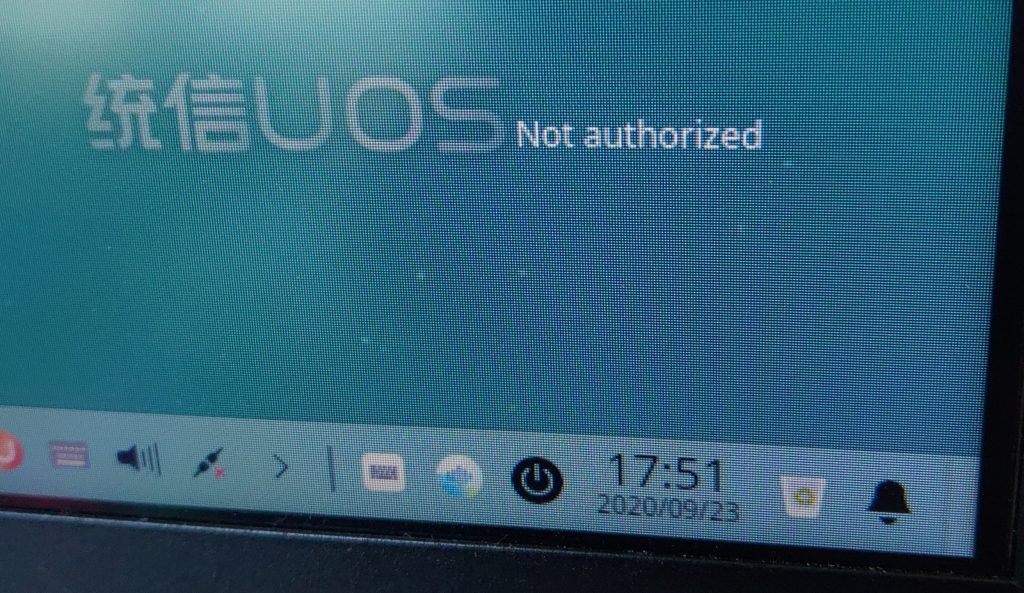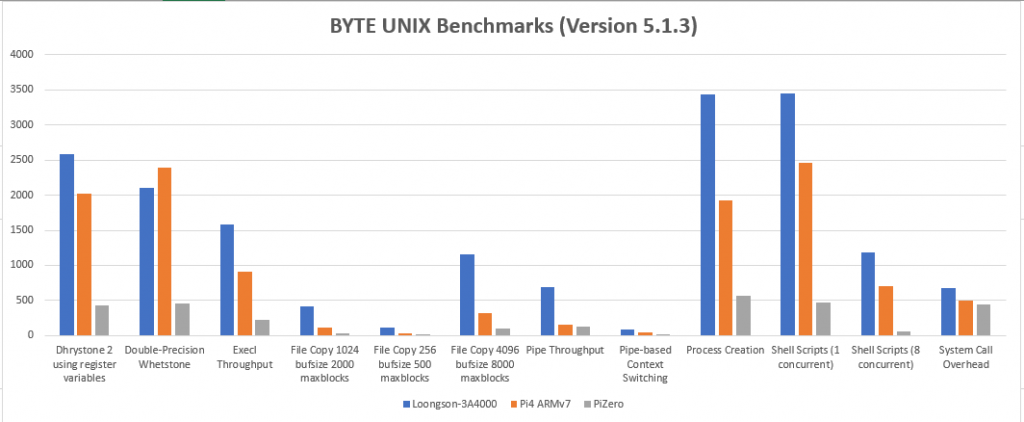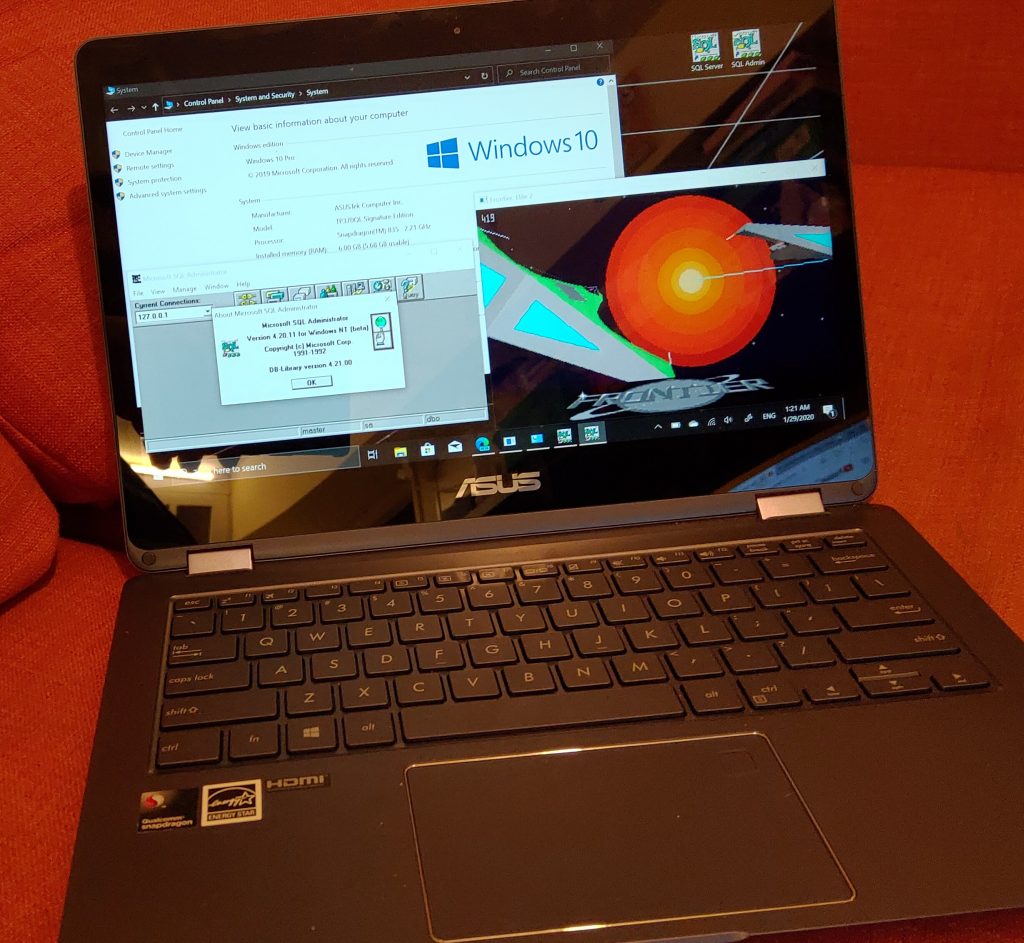I had gone over the install a while ago, but I wanted to re-install on a newer machine. And going from GCC 7 to 11, well a number of things changed. And I found with experience that letting Qemu select as much as it wants leads to numerous dependencies that end up being problematic.
jsteve@piorun:~/atar-boot/qemu/ppc-softmmu$ objdump -p qemu-system-ppc | grep NEEDED
NEEDED libvdeplug.so.2
NEEDED libncursesw.so.6
NEEDED libtinfo.so.6
NEEDED libz.so.1
NEEDED libxml2.so.2
NEEDED libpixman-1.so.0
NEEDED libutil.so.1
NEEDED libnuma.so.1
NEEDED libnettle.so.6
NEEDED libgnutls.so.30
NEEDED libfdt.so.1
NEEDED libgthread-2.0.so.0
NEEDED libglib-2.0.so.0
NEEDED librt.so.1
NEEDED libstdc++.so.6
NEEDED libm.so.6
NEEDED libgcc_s.so.1
NEEDED libpthread.so.0
NEEDED libc.so.6
So using the same atar qemu git dump, I found the newer config string a bit more refined:
./configure --target-list=ppc-softmmu --disable-sdl --disable-vnc --disable-gtk --disable-gnutls --disable-nettle --disable-gcrypt --disable-spice --disable-numa --disable-libxml2 --disable-vde --disable-werror --disable-seccomp --disable-capstone --disable-vhost-net --disable-vhost-crypto --disable-vhost-scsi --disable-vhost-vsock --disable-vhost-user --disable-tpm --disable-live-block-migrationAnother fun think is that there is submodules from other servers, and it seems their certs have expired.. Which also means it’s inevitable at some point this will become impossible to build. Be sure to set this environment variable in order to build:
export GIT_SSL_NO_VERIFY=true
As always Qemu will try to sneak a few things in there that we don’t need like audio support. As an example here is what I trimmed from config-host.mak:
$ diff -ruN config-host.mak config-host.mak-cutdown
--- config-host.mak 2022-11-08 09:37:41.104441392 +0000
+++ config-host.mak-cutdown 2022-11-08 09:37:25.084441253 +0000
@@ -27,8 +27,8 @@
CONFIG_SLIRP=y
CONFIG_SMBD_COMMAND="/usr/sbin/smbd"
CONFIG_L2TPV3=y
-CONFIG_AUDIO_DRIVERS=oss
-CONFIG_AUDIO_OSS=m
+CONFIG_AUDIO_DRIVERS=
+CONFIG_AUDIO_OSS=n
ALSA_LIBS=
PULSE_LIBS=
COREAUDIO_LIBS=
@@ -72,7 +72,6 @@
HAVE_STRCHRNUL=y
CONFIG_BYTESWAP_H=y
CONFIG_TLS_PRIORITY="NORMAL"
-CONFIG_TASN1=y
HAVE_IFADDRS_H=y
HAVE_FSXATTR=y
HAVE_COPY_FILE_RANGE=y
@@ -164,7 +163,7 @@
DSOSUF=.so
LDFLAGS_SHARED=-shared
LIBS_QGA+=-lm -lgthread-2.0 -pthread -lglib-2.0
-TASN1_LIBS=-ltasn1
+TASN1_LIBS=
TASN1_CFLAGS=
POD2MAN=pod2man --utf8
TRANSLATE_OPT_CFLAGS=
And this cuts down the needed dll’s to:
jsteve@piorun:~/atar-boot/qemu/ppc-softmmu$ objdump -p qemu-system-ppc | grep NEED
NEEDED libncursesw.so.6
NEEDED libtinfo.so.6
NEEDED libz.so.1
NEEDED libpixman-1.so.0
NEEDED libfdt.so.1
NEEDED libglib-2.0.so.0
NEEDED libm.so.6
NEEDED libgcc_s.so.1
NEEDED libc.so.6
which is a bit better. I’m still annoyed at it’s reliance on pixman despite not having any framebuffer support, I’m guessing I could amputate it if I looked further.
Since nothing has fundamentally changed, I can still use my original bootflags:
./qemu-system-ppc -M 40p -bios q40pofw-serial.rom -serial telnet::4441,server -hda disk0.vmdk-post-install -vga none -nographic -net none -cdrom /mnt/c/temp/xlc13-gzip.iso
And for the heck of it, this is the steps I used to get xlC 1.3 up and running:
restore -f /tmp/xlc/xlccmp2
restore -f /tmp/xlc/xlccmpmE2
chmod +x /usr/bin/xlc
chmod +x /usr/lpp/xlc/bin/xlcentry
chmod +x /usr/lpp/xlc/bin/dis
cp /usr/lpp/xlccmp/inst_root/etc/xlc.cfg /etc
cp /tmp/xlc/cpp /usr/lib/cpp
chmod +x /usr/lib/cpp
and with that all in place we can compile a simple hello world!
# cat mt.c
#include <stdio.h>
void main(){
printf("hi from C\n");
}
# xlc -v mt.c -o mt
exec: /usr/lpp/xlc/bin/xlcentry(xlcentry,mt.c,mt.o,mt.lst,-D_ANSI_C_SOURCE,-D_IBMR2,-D_AIX,-D_AIX32,-qansialias,NULL)
exec: /bin/ld(ld,-H512,-T512,-bhalt:4,-o,mt,/lib/crt0.o,mt.o,-lc,NULL)
unlink: mt.o
# ./mt
hi from C
#
xlC is also capable of building a running GNU Chess. And I updated the git so that book building works. Not that I expect anyone to care.
Chess
book
Compiling book, please wait…
186 games added, 3384 positions added, 3383 total positions in bookIt has the same desire to move pieces back and forth for thousands of moves, but it’s doing a heck of a lot more than any modern C compiler.
Since we don’t have any networking, Everything is on the console. I’ve found making CD-ROM images being a much easier way to get data in, and I’m still using uuencode to get data out from the console. I guess I should setup Z-modem at some point but that’s very futuristic. Or just break down and learn how to use C-kermit.
My go to quality of life startup is:
export TERM=vt100
stty erase ^?
export LIBPATH=$LIBPATH:/usr/lib
export PATH=/usr/local/bin:$PATHSure not perfect but it makes it slightly more usable. As a follow on, I got networking working here: Networking on AIXI 4.3

